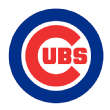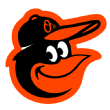Long after Anthony Rizzo raised his arms in celebration and stuffed the championship-clinching baseball into his right pocket, Aroldis Chapman reminded everyone why the Great Reliever Revolution has no chance of happening.
When the New York Yankees formally announced the re-signing of Chapman, he suggested to reporters on a conference call that Cubs manager Joe Maddon overused him through Chicago's championship run.
"Personally, I don't agree with the way he used me," Chapman said through an interpreter. "But he is the manager, and he had the strategy, you know?"
This was after Chapman, Maddon and the Cubs won the World Series -- after it all ended well. Imagine how some players feel about aggressive bullpen decisions by a manager of much less stature than Maddon -- in other words, most managers -- when things don't turn out well.
The primary reason that the Great Reliever Revolution will never truly take form is a matter of practicality. The aggressive manner in which Terry Francona managed the Cleveland bullpen last October cannot happen during the summer, because there are no consistent off-days built into the regular season; teams play almost every day. In the first two months that Andrew Miller pitched for Francona, in August and September, he had exactly one appearance in which he reached 30 pitches (35, on Sept. 17). In the 32 days of the Indians’ 2016 postseason, Miller threw more than 30 pitches five times. If Francona tried to do that from April through September, Miller wouldn't be available at all for stretches of three or four days. If Francona wanted to call on Miller for a fifth-inning jam, that would mean asking Cody Allen or Bryan Shaw to stretch out in the eighth inning -- making them unavailable for two or three days.
"The postseason is a different animal," Francona said recently. "The only time I do it different during the season is when a pitcher hasn't pitched for too long."
But at the heart of what Chapman said was not animosity toward Maddon, but players' general cravings for structure as they go through the long regular season. Most position players want to know the night before a game whether they're going to be in the lineup. Most starting pitchers want to know how long the national anthem will be so they can time their warmups properly. Most relievers want to know, generally, when the bullpen phone could ring for them.
This is part of what distinguishes Miller from a lot of relievers: He has shown time and again, with the Red Sox, Orioles, Yankees and Indians, that he does not fret over when he is used. He believes that he is paid to pitch when he is told to pitch, and not just as a setup man, or a closer, or in the eighth or ninth inning.
Relievers have been paid record-setting dollars this winter. But don’t assume that means the newly minted Kenley Jansen is going to be jumping up in the bullpen in the seventh inning in April, or that Joe Girardi will call on Chapman in the eighth. The habits and needs of the old baseball world are too entrenched for the Great Reliever Revolution to happen -- for now.
With that in mind: Here’s a ranking of the Top 10 team bullpens in MLB, based on the input of evaluators.
Miller and closer Allen are both Top 10 relievers, and Shaw has led the AL in appearances in two of the last three seasons. Shaw, 29, has been remarkably consistent in his time in the big leagues. Cleveland has some experience and depth, with right-handers Dan Otero and Zach McAllister. And the Indians know bullpen candidate Ryan Merritt, who made a strong emergency start in the AL Championship clincher against Toronto, throws strikes and is not afraid. Shawn Armstrong and Perci Garner could develop into bullpen options for Cleveland during the season.
X-factor for the Cleveland bullpen: How will the Indians reliever respond to the heavy workload of 2016? When a team plays deep into October, there's always a question about how the starting pitchers -- like a Madison Bumgarner, a Cole Hamels or a Corey Kluber -- will bounce back the following year. The same question could apply to the primary Cleveland relievers, who all were taxed into the first days of November, shortening their offseason rest.
Miller's 2016 innings, regular season/postseason combined: 93 2/3 (career high as a reliever)
Allen's 2016 innings: 81 2/3 (career high)
Shaw's 2016 innings: 77 (career high)
Behind closer Zach Britton, the Orioles have a solid collection of set-up men, including Darren O'Day (who will enter spring training with no medical restrictions after being limited to 34 games last season), Brad Brach and Mychal Givens.
X-factor for the Orioles' bullpen: There will come a day in the next two years when Baltimore executives will have to address a question that hangs over Britton: If they don’t sign him to a long-term deal beyond his free agency (fall of 2018), when should they trade him? Generally speaking, baseball executives believe you can extract a higher trade return for relievers during the season (and in the offseason for starting pitchers). And if the Orioles are languishing in what should be a very competitive AL East, Baltimore should at least explore what Britton's trade value could be.
 3. Chicago Cubs
3. Chicago Cubs
The Cubs traded for Wade Davis and signed Koji Uehara and Brian Duensing, restocking a bullpen that lost Aroldis Chapman and Travis Wood to free agency. Carl Edwards will probably continue to take on more responsibility after dominating hitters in his 36 games last season, when he held right-handed hitters to a .108 average and left-handers to a .146 average.
X-factor for Cubs' bullpen: Davis' health. He missed more than a month with a strained forearm in 2016. If the problem does pop up again, the Cubs have a safety net available in Hector Rondon, who had been the Chicago closer before the acquisition of Chapman and has 77 career saves. Rondon led the majors in first-pitch strike percentage last season.
By the end of the 2016 season, the Astros had developed a nice relay team of relievers when they had a lead to protect, from the strike-throwing Chris Devenski (1.61 ERA in relief) to Will Harris to Luke Gregerson to closer Ken Giles. No bullpen had a lower WHIP than the Astros at 1.14 in 2016, and only three teams generated a lower opponents' OPS than Houston's .672. Gregerson and Giles ranked first and second, respectively, among all relievers in swing-and-miss percentage, at 20.1 percent and 19.9 percent.
The Houston relievers led all bullpens in fWAR last season, by far.
Houston: 7.9
Mets: 6.5
Dodgers: 6.5
Yankees: 6.4
Orioles: 5.5
X-factor for the Astros' bullpen: Ken Giles, who went through an early-season slump that cost him the closer's job for a time -- until he recovered and took over the ninth innings later in the season. In his final 44 1/3 innings last season, Giles struck out 74 and walked 16.
With Kenley Jansen back to anchor the group, the Dodgers are positioned to play matchups with a group that was particularly good at that last season. Some of the splits that Dave Roberts and Rick Honeycutt can sort through daily:
Left-handed hitters vs. Grant Dayton: .428 OPS
LHers vs. Pedro Baez: .553 OPS
LHers vs. Luis Avilan: .519 OPS
LHers vs. Adam Liberatore: .494
RHers vs. Josh Ravin: .120
The Dodgers will have to replace the 80 innings and 75 appearances left behind by Joe Blanton, a free agent.
X-factor for the Dodgers' bullpen: L.A. has a surplus of starting pitching that will eventually spill over into the relief corps, whether it be Alex Wood, Ross Stripling, Brandon McCarthy or others. The Dodgers led the majors in bullpen innings last season because of some of their rotation issues.
 6. New York Yankees
6. New York Yankees
Dellin Betances famously struggled in the closer's role in August and September after the Yankees traded Chapman and Miller. Betances even seemed to develop a paralyzing case of the yips when throwing to bases. I wondered if this might affect the perception of Betances and the Yankees' bullpen potential among evaluators, and the short answer is: absolutely not. Betances led the majors with 15.53 strikeouts per nine innings, and 40 percent of the earned runs scored against him were plated in September. Now he moves back to the setup role, with Chapman going back to the closer's role. The Yankees also have veteran reliever Tyler Clippard, swingman Adam Warren, and left-handers Chasen Shreve, Tommy Layne and Richard Bleier.
X-factor for the Yankees' bullpen: The innings generated by the rotation. The Yankees don't necessarily need dominant starting pitching to help their bullpen, but they can't afford to continually draw on what should be a pretty good bullpen. So the ability of CC Sabathia and Michael Pineda to consistently work into the sixth inning will be crucial. Last year, the Yankees rotation ranked 15th in innings, which is about where it needs to be to protect the relievers from erosion.
Boston closer Craig Kimbrel has 256 saves, and Boston Manager John Farrell has a lot of right-handers to choose from, including Tyler Thornburg, Matt Barnes, Joe Kelly and Heath Hembree. The Red Sox relievers could have an enormous advantage over those with other teams because of the apparent stability of the Boston rotation: Chris Sale, David Price and Rick Porcello are all steady sources of innings and should allow Farrell to keep his bullpen rested.
X-factor for the Red Sox's bullpen: Kimbrel's command. In his last 25 2/3 innings, he walked 22, leaving some evaluators to wonder if he was completely healthy the last couple of months.
Seung Hwan Oh was a star in his first season with the Cardinals, and he's positioned at the back end of a group that also includes left-hander Kevin Siegrist and right-hander Jonathan Broxton. Given the uncertainty about Trevor Rosenthal and the need for a left-hander, the Cardinals spent $30.5 million to sign Brett Cecil.
X-factor for the Cardinals' bullpen: Rosenthal. He lost the closer's job last season in the midst of a year in which he walked 29 in 40 1/3 innings and had a precipitous decline in the percentage of opposing hitter swings on pitches outside the strike zone. Given his extensive track record, his performance will dictate how significant a role he'll assume this season. The Cardinals will bet on him, if they can.
General manager Jon Daniels asserted recently that he's intent on leaving Matt Bush in the bullpen, following a breakthrough season for the right-hander. In 2016, Bush held hitters to a .196 batting average in 61 2/3 innings, with 14 walks and 61 strikeouts. The Rangers are well set up around Bush with right-handers (closer Sam Dyson, Jeremy Jeffress) and left-handers (Jake Diekman, Alex Claudio).
X-factor for the Rangers' bullpen: Its workload. The back end of the Rangers' rotation is unsettled and, as with the Yankees' group, the Texas relief corps would greatly benefit if manager Jeff Banister and pitching coach Doug Brocail find rock-solid solutions for their No. 4 and No. 5 starters; Andrew Cashner and A.J. Griffin will be penciled in when spring training begins.
The Pirates seemingly have a lot of the necessary pieces for a good bullpen, including Tony Watson, Felipe Rivero, newly signed Daniel Hudson and Jared Hughes.
X-factor for the Pirates' bullpen: Watson as closer. He had some tough days after taking over the role from Mark Melancon. In 19 outings from Aug. 5 to Sept. 19, Watson surrendered six homers in 17 1/3 innings and had a 5.19 ERA. The Pirates need for him to be better to keep their bullpen structure in place.
Honorable mention
Toronto Blue Jays: The Jays got a number of top-10 nominations from evaluators given the presence of closer Roberto Osuna. The loss of Brett Cecil could hurt.
Miami Marlins: The grand plans of owner Jeffrey Loria were to sign either Chapman or Jansen. But when that didn't happen, there were probably some greatly relieved Marlins executives, who avoided another big-ticket item. The Marlins added Brad Ziegler and Junichi Tazawa to serve as setup men for closer A.J. Ramos, and Miami already has Kyle Barraclough, who racked up 113 strikeouts and allowed only 45 hits (one homer) in 72 2/3 innings last season.
Kansas City Royals: Kelvin Herrera takes over as the Kansas City closer, and the Royals need a rebound in performance from Joakim Soria.
Seattle Mariners: Edwin Diaz's emergence last season turned the Seattle relief corps into something much more dangerous. Diaz and Steve Cishek had 164 strikeouts in 115 2/3 innings last season.
New York Mets: They had a strong 2016, but it's unclear how long the 2017 Mets will be without closer Jeurys Familia following his domestic violence incident.

 1.
1.  2.
2.  4.
4.  5.
5.  7.
7.  8.
8.  9.
9.  10.
10.